The AMD Radeon RX 5700 XT & RX 5700 Review Navi Renews Competition in the Midrange Market AnandTech
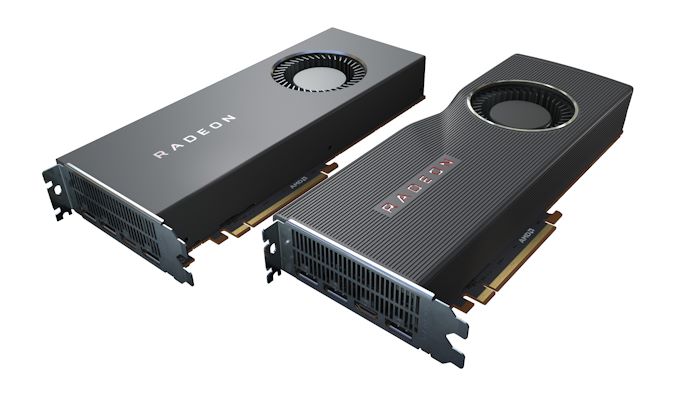
There had been teasers, press conferences, architectural announcements, and pricing games all around – and all earlier than the first card has even shipped. The run-up to the launch of AMD’s new Radeon RX 5700 series of video cards has been a dynamic and memorable time, and a completely becoming outcome for a family of playing cards named after AMD’s legendary Radeon HD 5700 series. However, sooner or later all of the showmanship need to come to an quit and the cards will fall in which they will: launch day is upon us for AMD’s Radeon RX 5700 collection and RDNA GPU structure.
I’m not positive there’s anything traditional approximately an AMD video card launch at this point, however today’s launch is about as non-traditional as they arrive, proper on down to the Sunday release date. AMD introduced their video playing cards nearly a month in the past at an epic (ed: that’s EPYC) E3 occasion, taking the wraps off of both their new CPUs and GPUs. Rather than keep some thing back, AMD got here to E3 with everything front-loaded: specs, expenses, architectural details; the whole lot besides a pile of playing cards to sell. So we’ve been looking forward to this moment for some time now, to test AMD’s claims approximately electricity, overall performance, and features, and spot how they translate into real-world gaming overall performance. AMD has plenty that they want to do inside the video card area, and driving excessive on their success with Zen the enterprise’s ambition is once more palpable.
Getting right down to business then, these days is the launch of AMD’s subsequent era of video playing cards, the Radeon RX 5700 series. Aimed at what in recent times is the midrange section of the video card marketplace, AMD is looking to carve out a brand new location for the organisation in the hearts of game enthusiasts who're searching out excessive overall performance video playing cards that won’t cost a fortune. These parts are, in turn, based on AMD’s Navi 10 GPU, which is the primary GPU using the corporation’s new RDNA structure. And, whilst Navi 10 is not AMD’s first 7nm GPU – an honor the Radeon VII and its Vega 20 beat it to – it’s the primary 7nm GPU which you’re absolutely going to want to be aware of.
Altogether, AMD is rolling out two(ish) cards today. At $399 we've AMD’s new class-leading Radeon RX 5700 XT, which is a complete-fledged Navi 10 card with all the trimmings. Meanwhile, for the marginally extra price range conscious, we've the $349 Radeon RX 5700 (vanilla), a cut-down Navi 10 card that offers up a few performance for decrease pricing and decrease strength intake. Finally, AMD is likewise launching their own “Anniversary Edition” model of the 5700 XT, which capabilities a manufacturing facility overclock and could promote for $449. (This card will be a footnote for nowadays’s article, because it’s a constrained-edition card that AMD isn’t sampling)
| AMD Radeon RX Series Specification Comparison | ||||
| AMD Radeon RX 5700 XT | AMD Radeon RX 5700 | AMD Radeon RX 590 | AMD Radeon RX 570 | |
| Stream Processors | 2560 (40 CUs) | 2304 (36 CUs) | 2304 (36 CUs) | 2048 (32 CUs) |
| Texture Units | 160 | 144 | 144 | 128 |
| ROPs | 64 | 64 | 32 | 32 |
| Base Clock | 1605MHz | 1465MHz | 1469MHz | 1168MHz |
| Game Clock | 1755MHz | 1625MHz | N/A | N/A |
| Boost Clock | 1905MHz | 1725MHz | 1545MHz | 1244MHz |
| Throughput (FP32) | 9.75 TFLOPs | 7.95 TFLOPs | 7.1 TFLOPs | 5.1 TFLOPs |
| Memory Clock | 14 Gbps GDDR6 | 14 Gbps GDDR6 | 8 Gbps GDDR5 | 7 Gbps GDDR5 |
| Memory Bus Width | 256-bit | 256-bit | 256-bit | 256-bit |
| VRAM | 8GB | 8GB | 8GB | 4GB |
| Transistor Count | 10.3B | 10.3B | 5.7B | 5.7B |
| Typical Board Power | 225W | 180W | 225W | 150W |
| Manufacturing Process | TSMC 7nm | TSMC 7nm | GloFo/Samsung 12nm | GloFo 14nm |
| Architecture | RDNA (1) | RDNA (1) | GCN 4 | GCN 4 |
| GPU | Navi 10 | Navi 10 | Polaris 30 | Polaris 10 |
| Launch Date | 07/07/2019 | 07/07/2019 | 11/15/2018 | 08/04/2016 |
| Launch Price | $399 | $349 | $279 | $179 |
For each gamers and AMD, the release of the RX 5700 is an crucial one – and probable to be the maximum widespread video card release of the yr. For clients, this is the primary series of excessive-quantity video playing cards built on a 7nm technique, pushing performance up and charges down at a time wherein video card pricing has been gradual enhance. For AMD, this launch receives their particularly essential RDNA structure out the door to its first customers, all the whilst renewing their competitiveness within the midrange market. The RX 5700 series aren’t flagship-level playing cards, however make no mistake: for AMD they’re still as important as any flagship launch.
AMD’s Radeon DNA (RDNA) structure, in flip, is an interesting development. We’ll get into a whole lot greater element in a while, however at a excessive level RDNA is the most substantial architectural improvement for AMD since the release of Graphics Core Next in 2011. AMD and its engineers have made adjustments to their GPU architecture at a number of its maximum essential degrees, which comes with large ramifications for performance, performance, and more. This is all to put together their subsequent-technology structure for the employer’s grand goals: RDNA and its successors could be in PC video playing cards, in APUs, in sport consoles, and thanks to a partnership with Samsung, even in mobile GPUs.
Still, RDNA is handiest as valuable because the overall performance it brings, and this may specially be the case for the RX 5700 collection. The first generation of this structure is all approximately converting the internal plumbing of AMD’s GPUs. As a end result, there aren't any actual marquee hardware capabilities to speak of – AMD isn’t rolling out paradigm-changing functions like ray tracing or the following Rapid Packed Math – so for consumers, the RX 5700 cards are basically interchangeable with2019’s Vega playing cards in phrases of photographs functionality. Which isn't to say that AMD is displaying up empty-passed, but what new features it's miles rolling out – Radeon Anti-Lag and Radeon Image Sharpening – are software-based capabilities with a purpose to be to be had to the entire Radeon product circle of relatives. This way that the payoff for AMD needs to be in pricing, energy intake, and performance; the RX 5700 wishes to deliver on the basics.
Ultimately there are a whole lot of phrases I ought to spill as regards to AMD, especially on nowadays of all days, the launch of both their next-generation CPU and GPU architectures. But perhaps it’s excellent to keep things easy: these days’s release of the enterprise’s Radeon RX 5700 series video playing cards and the RDNA architecture is a far-wanted possibility for the organisation to reset and get better within the video card area. Vega was in the end underwhelming, Polaris could be very lengthy inside the enamel, and AMD remains feeling the hangover from the cryptocurrency increase & busts. The organization has hung on to their purchaser market proportion via competitive pricing – RX 500 series playing cards are disruptively reasonably-priced – but AMD needs to be extra seen and extra profitable in the event that they want to remain a feasible competitor to juggernaut NVIDIA. Not to say shoring up their function as Intel ramps as much as become the 0.33 player in the video card space in the subsequent couple of years.
Product Positioning, Availability & the Competition
Leading as much as today’s release, the statement Radeon RX 5700 series has created quite a butterfly impact across the more video card enterprise. With AMD having proven their cards early, NVIDIA, who has essentially been dominating the $300+ area because the start of the yr, made their personal preemptive move with the launch of the GeForce RTX 2070 Super and the RTX 2060 Super. A charge reduce in the entirety however name, the brand new Super playing cards saw NVIDIA basically shift the performance of its $699 RTX 2080 and $499 RTX 2070 playing cards down to $499 and $399 respectively. These cards won’t cross on sale for any other two days (on a greater conventional Tuesday), but it’s a release that turned into actually meant to shore up NVIDIA’s own function at the same time as taking a few steam out of AMD’s launch.
AMD in turn made their personal changes, reducing the price in their cards on Friday before they even launched. While the RX 5700 XT turned into in the beginning set to launch at $449 and the RX 5700 (vanilla) at $379, these have become $399 and $349 cards respectively earlier than the first board was ever bought. These forms of closing-minute pricing shenanigans are not remarkable – first impressions matter for plenty – but it’s been a long term on the grounds that we’ve visible AMD and NVIDIA buying and selling photographs in quite one of these direct way. The net result is that, at the least for the $349 to $499 phase of the video card marketplace, the performance-in step with-greenback ratio just went up even more.
Overall, outdoor of today’s unusual release date, this need to be a pretty widespread release cycle for AMD. The enterprise is launching in regards playing cards first, which means that AMD and board partners alike will be promoting cards based on AMD’s reference PCB and blower. Custom and semi-custom playing cards will come later, as substances ramp up, board partners qualify their coolers, and new, GDDR6-succesful PCBs are engineered. AMD has not disclosed what number of playing cards are being disbursed for the launch, but nowadays it’s rare to see a new generation of midrange (or higher) cards now not promote out at launch. So anyone interested in an RX 5700 card may additionally need to behave fast.
Within AMD’s product stack, these new playing cards can be the backbone of AMD’s product lineup. The business enterprise’s Vega family of cards changed into already on its manner out because of opposition from NVIDIA, so this can be the final push for those playing cards. That will leave the Radeon VII above the RX 5700 playing cards, after which the RX 500 series under it. And whilst AMD hasn’t announced every other Navi GPUs, ultimately the ones cards gets driven out too via a decrease-tier Navi GPU.
Trickier, possibly, is putting the new playing cards within a historic context for AMD’s product lineups. Is the Radeon RX 5700 collection the successor to the RX Vega collection, or the RX 500 series? In phrases of pricing and absolute overall performance, it’s towards the former. However in phrases of die size and relative overall performance profits, these playing cards experience loads just like the next-generation successors to Polaris. It’s a piece of an academic question – shoppers are going to consciousness on perf-per-dollar first and predominant – but how those playing cards are framed can have an impact on how they’re received.
Sizing up the competition, AMD turned into initially going to release these playing cards against NVIDIA’s GeForce RTX 2070 and RTX 2060. Now with the release of the Super playing cards and the impending retirement of the RTX 2070, those matchups have modified. NVIDIA’s opposition is now the RTX 2060 Super at $399, and the RTX 2060 (vanilla) at $349, both costs at once contrary AMD’s new playing cards. AMD in turn comes in with the edge on manufacturing procedure, as they’re the use of TSMC 7nm as opposed to the 16nm offshoot that NVIDIA makes use of, but NVIDIA comes in with a wonderful feature advantage thanks to ray tracing and variable charge shading aid. AMD and NVIDIA’s playing cards are not same in capabilities, and a good way to play a large component of their cost.
Ultimately, nowadays’s release isn’t a case of a subsequent-generation card coming in and wiping the floor with its ultimate-era opposition; like the RTX 20 collection launch closing yr, the RX 5700 release is a greater sluggish shift in pricing and performance. GPU improvement is high-priced, 7nm is even greater costly, and anybody is gambling things loads greater conservatively than they did in advance this decade. For the instant then, the RX 5700 collection can largely be considered to be part of the same generation of GPUs because the RTX 20/GTX 16 collection, for all the blessings and disadvantages that includes. The upside is that we get extra to speak about, and get to form a extra nuanced opinion, however for each person searching out a simple recommendation for a new video card, there received’t be anything quite that simple with this release.
Finally, both AMD and NVIDIA could be looking to tip the scales with sport bundles. On the AMD aspect, the employer is launching each its new CPUs and GPUs with their new Xbox Game Pass for PC bundle, in order to see the goods come with a three-month voucher for Microsoft’s new sport subscription service. Meanwhile NVIDIA is bundling Wolfenstein: Youngblood with its RTX 2060, while the new RTX 2060 Super and RTX 2070 Super playing cards get that plus Control as nicely.
| July 2019 GPU Pricing Comparison | ||
| AMD | Price | NVIDIA |
| $1249 | GeForce RTX 2080 Ti | |
| Radeon VII | $699 | GeForce RTX 2080 Super |
| $499 | GeForce RTX 2070 Super | |
| Radeon RX 5700 XT | $399 | GeForce RTX 2060 Super |
| Radeon RX 5700 | $349 | GeForce RTX 2060 |
The genuine stars of brand new release are, of route, the brand new Radeon playing cards themselves. For today’s launch AMD goes completely reference, and that goes for his or her companions as well. So what you’ll see here is what you’ll get, in phrases of capabilities, layout, and overall performance.
With the release of a new GPU structure additionally comes the release of latest drivers, and the teething issues that come with the ones. We’ll cross over overall performance matters in extra element on the following pages, but to begin matters off, I wanted to word the kingdom of AMD’s driving force stack, and any remarkable troubles I ran into.
The massive problem in the interim is that at the same time as AMD’s drivers are in fairly properly form for gaming, the same can not be said for compute. Most of our compute benchmarks both failed to have their OpenCL kernels collect, triggered a Windows Timeout Detection and Recovery (TDR), or would simply crash. As a end result, most effective three of our ordinary benchmarks have been executable here, with Folding@Home, parts of CompuBench, and Blender all getting whammied.
And "executable" is the selection phrase here, because despite the fact that benchmarks like LuxMark would run, the scores the RX 5700 playing cards generated have been nary better than the Radeon RX 580. This a part that they could easily beat on raw FLOPs, let alone performance. So even if it runs, the state of AMD's OpenCL drivers is at a point in which these drivers are likely now not indicative of whatever about Navi or the RDNA structure; simplest that AMD has a whole lot of paintings left to go along with their compiler.
So even as I’m hoping to higher dig into the compute implications of AMD’s new GPU architecture at a later time, for these days’s release there’s now not going to be loads to say at the subject. Most of our typical (and maximum informative) gear just don’t paintings right now.
As for the gaming side of subjects, things are loads better. Compared to some beyond launches, I’ve encountered a incredibly small quantity of “weirdness” with AMD’s new hardware/drivers on current video games. Everything ran, and no video games crashed because of GPU troubles (outright insects, however…).
The best sport I’d especially flag here is Assassin’s Creed Odyssey, a DirectX 11 recreation. With an unlocked framerate, this is not a benchmark that runs distinctly smoothly to start with; and the RX 5700 series cards appeared to fare a chunk worse here. The amount of (extra) stuttering changed into clean enough to pick out up with my eyes, and the sport’s very own reporting equipment recorded it as properly. It isn't always a night time and day difference when you consider that the sport doesn’t begin from a first-rate region, however it’s clear that AMD has some room to tighten up its drivers as a long way as frame transport is going.
Finally, for something purpose, the RX 5700 playing cards wouldn’t display the boot/BIOS displays while mounted to my testbed display over HDMI. This hassle did not occur with DisplayPort, that is admittedly the desired connection in any case. But it’s an peculiar development, when you consider that this behavior doesn’t occur with Vega or Polaris cards – or another playing cards I’ve examined, for that remember.
Meanwhile, as a reminder, right here is the list of video games for our 2019 GPU benchmarking suite.
| AnandTech GPU Bench 2019 Game List | |||
| Game | Genre | Release Date | API |
| Shadow of the Tomb Raider | Action/TPS | Sept.2019 | DX12 |
| F1 2019 | Racing | Jun. 2019 | DX12 |
| Assassin's Creed Odyssey | Action/Open World | Oct.2019 | DX11 |
| Metro Exodus | FPS | Feb. 2019 | DX12 |
| Strange Brigade | TPS | Aug.2019 | Vulkan |
| Total War: Three Kingdoms | TBS | May. 2019 | DX11 |
| The Division 2 | FPS | Mar. 2019 | DX12 |
| Grand Theft Auto V | Action/Open world | Apr.2019 | DX11 |
| Forza Horizon 4 | Racing | Oct.2019 | DX12 |
And here is the 2019 GPU testbed.
| CPU: | Intel Core i9-9900K @ 5.0GHz |
| Motherboard: | ASRock Z390 Taichi |
| Power Supply: | Corsair AX1200i |
| Hard Disk: | Phison E12 PCIe NVMe SSD (960GB) |
| Memory: | G.skill Trident Z RGB DDR4-3600 2 x 16GB (17-18-18-38) |
| Case: | NZXT Phantom 630 Windowed Edition |
| Monitor: | Asus PQ321 |
| Video Cards: | AMD Radeon RX 5700 XT AMD Radeon RX 5700 AMD Radeon RX Vega 64 AMD Radeon RX Vega 56 AMD Radeon RX 580 AMD Radeon RX 570 AMD Radeon R9 390X NVIDIA GeForce GTX 2070 Super Founders Edition NVIDIA GeForce GTX 2060 Super Founders Edition NVIDIA GeForce GTX 2060 Founders Edition NVIDIA GeForce GTX 1070 Founders Edition NVIDIA GeForce GTX 980 |
| Video Drivers: | NVIDIA Release 431.15 AMD Radeon Software Adrenalin 2019 Edition 19.7.1 |
| OS: | Windows 10 Pro (1903) |

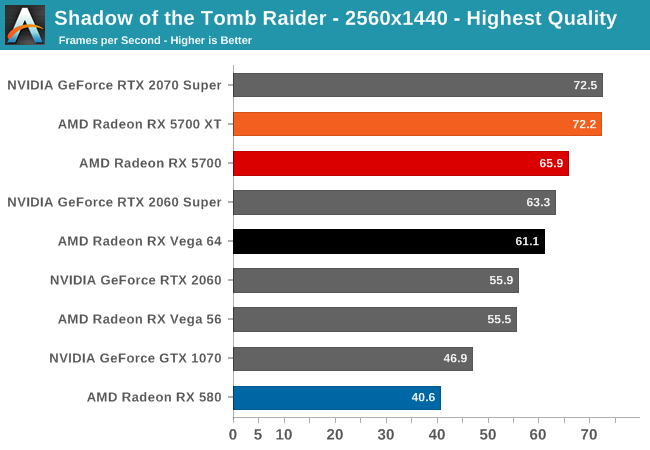
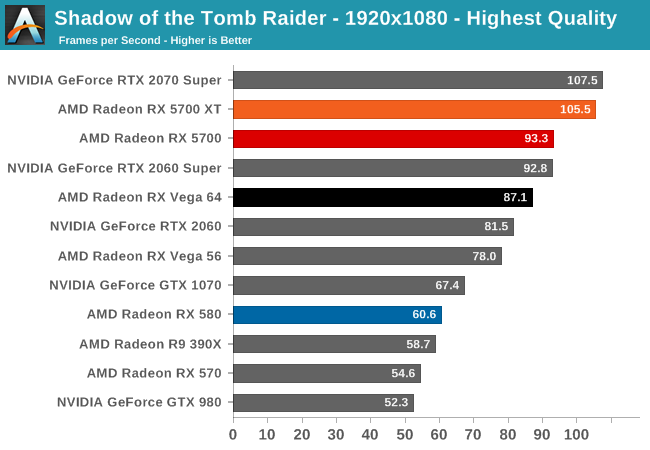
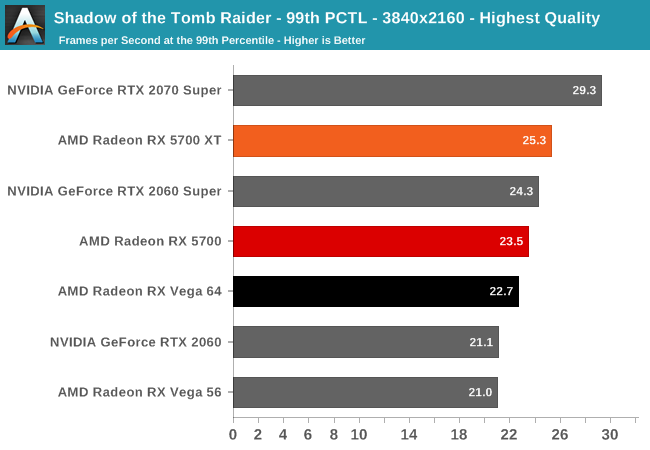
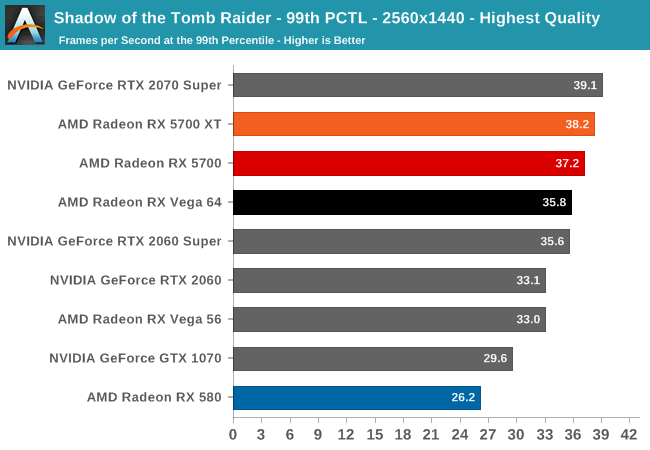
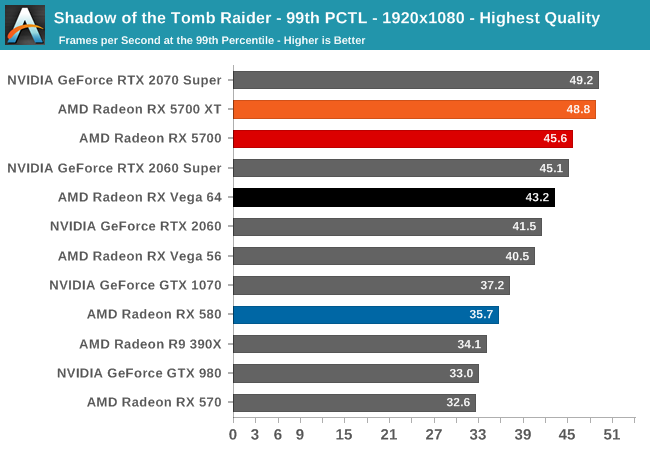
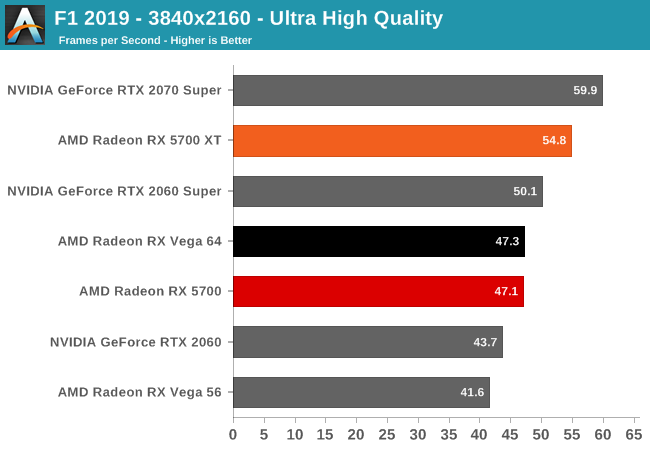
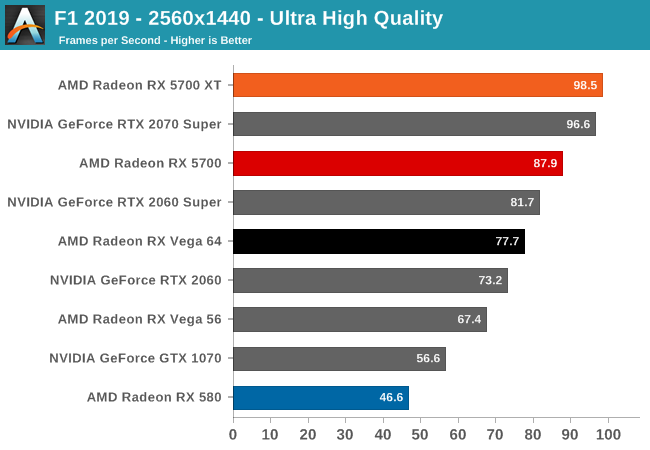



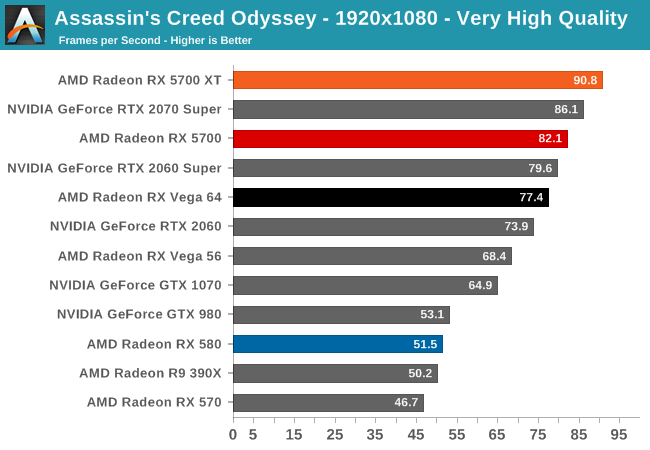

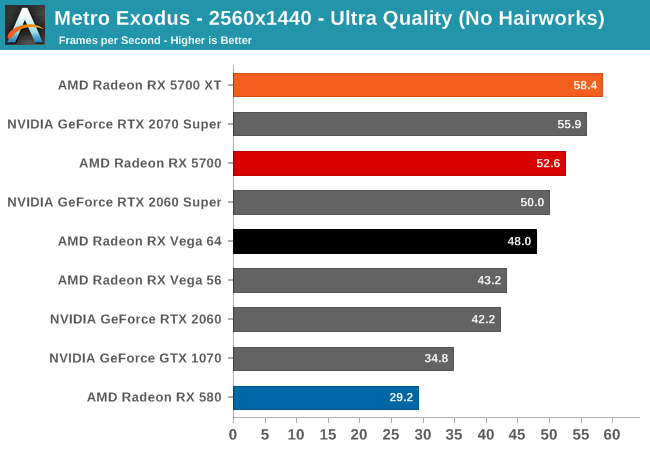

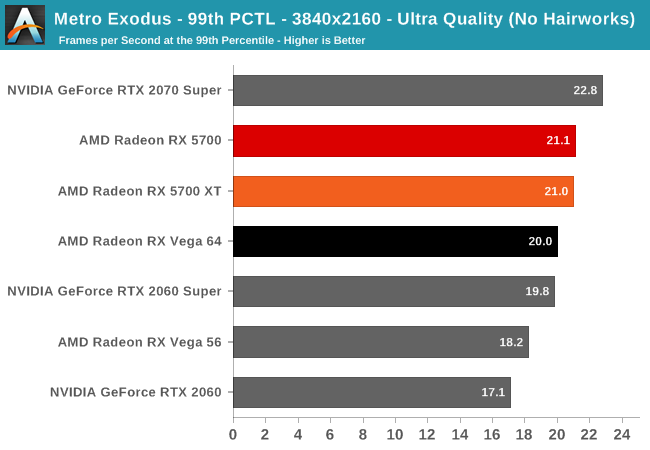
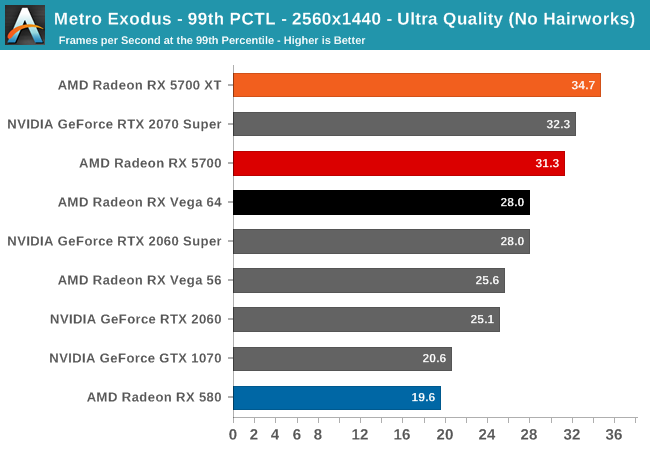
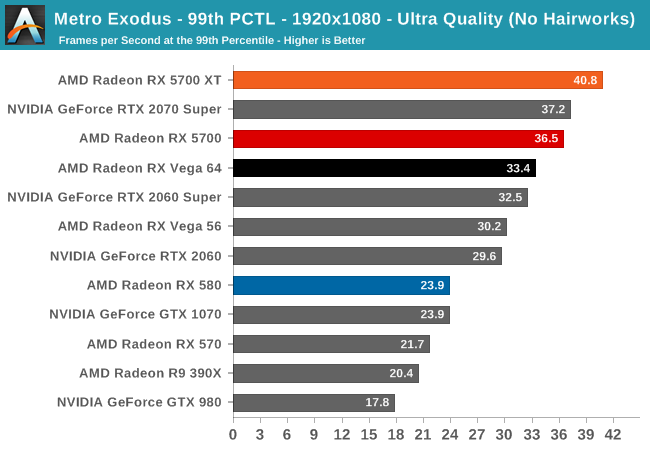
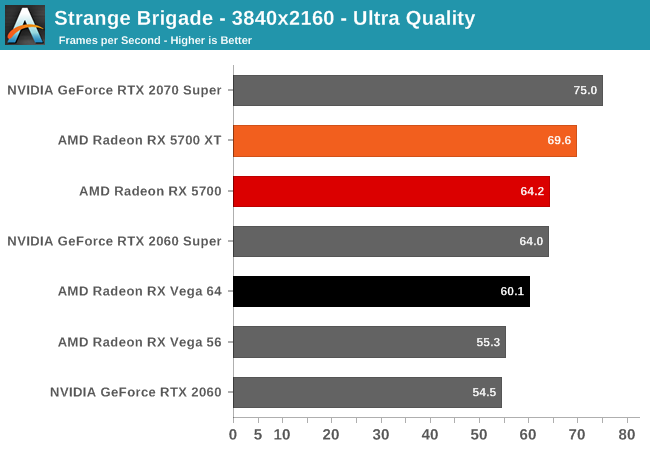
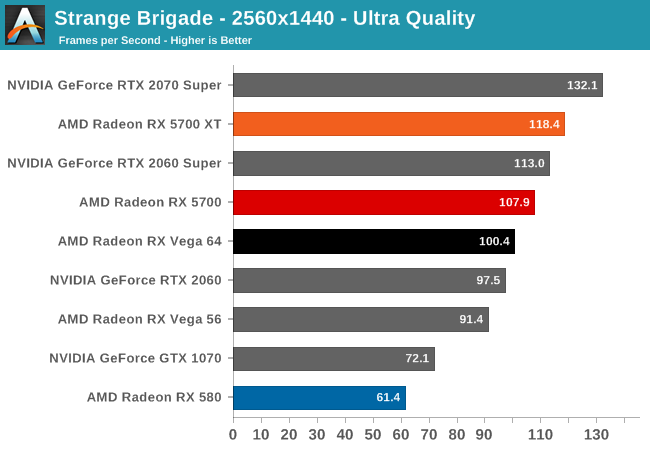
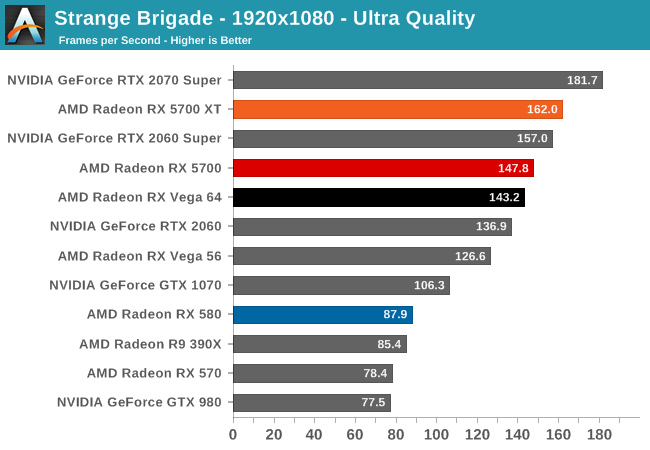
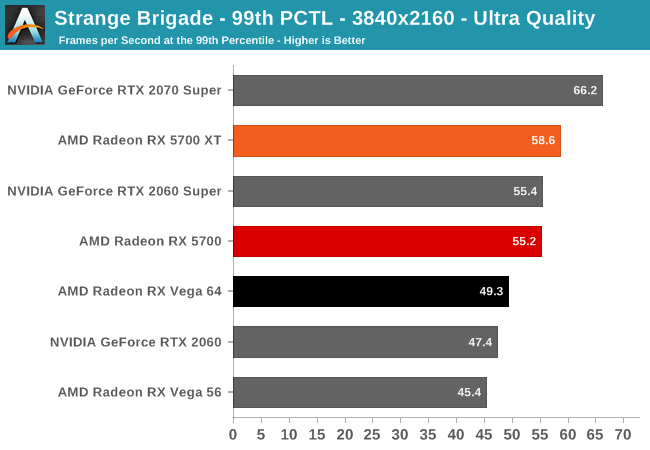
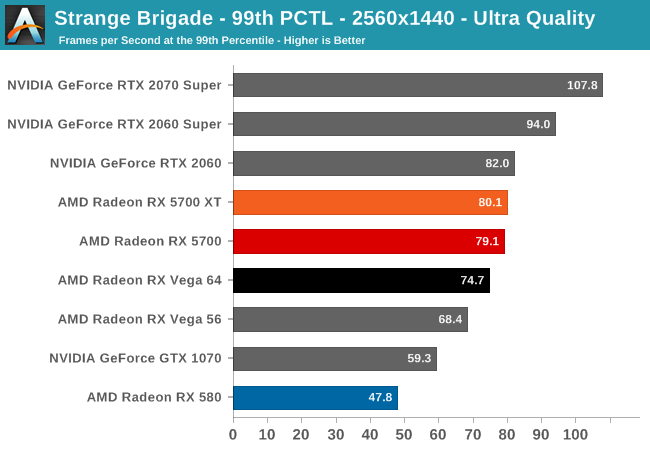

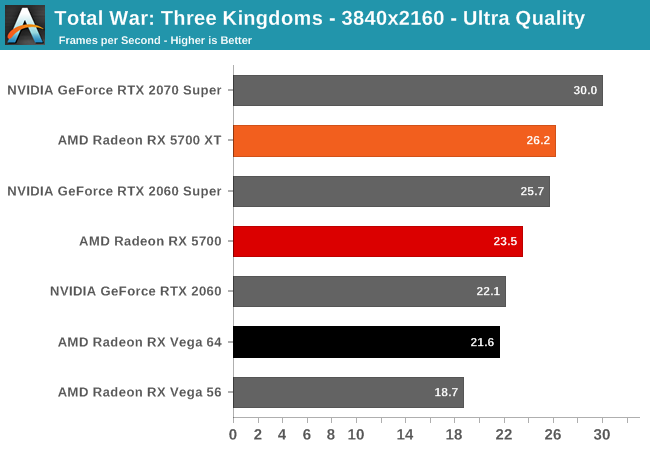

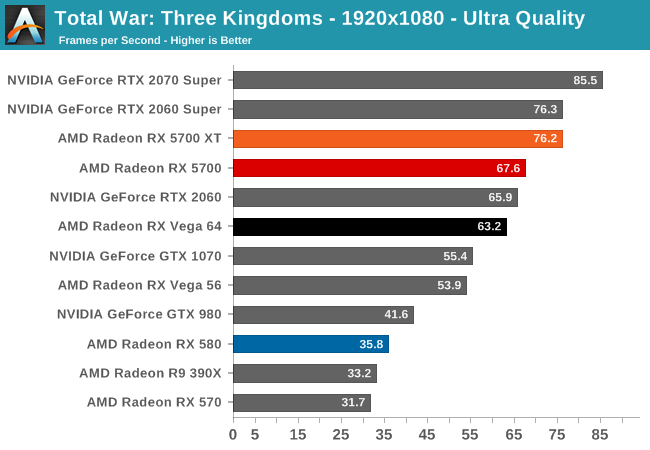
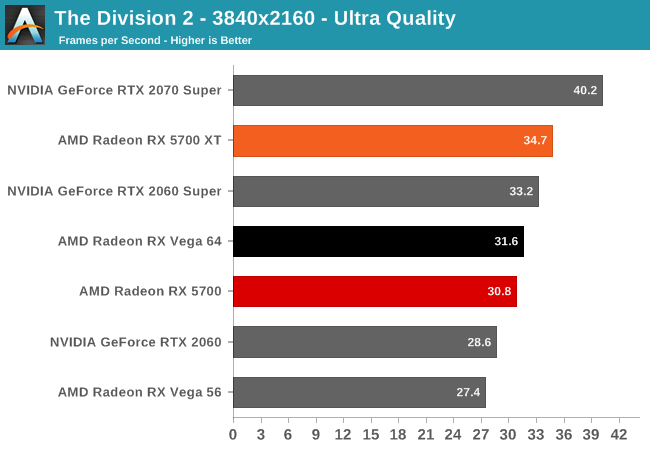

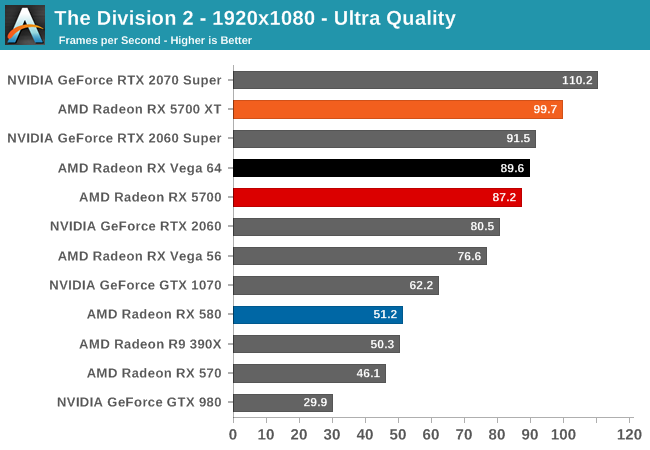
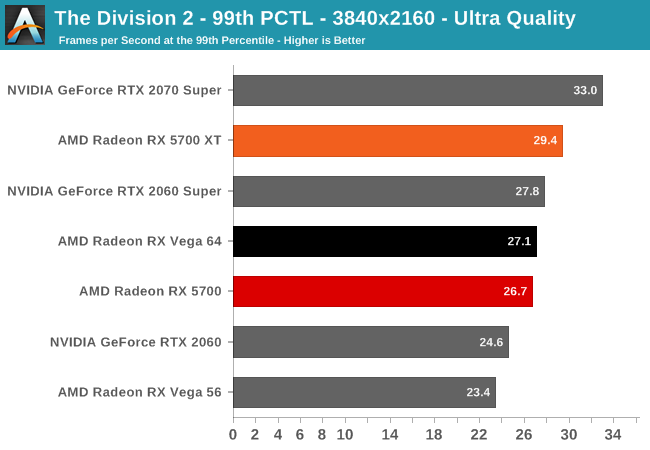
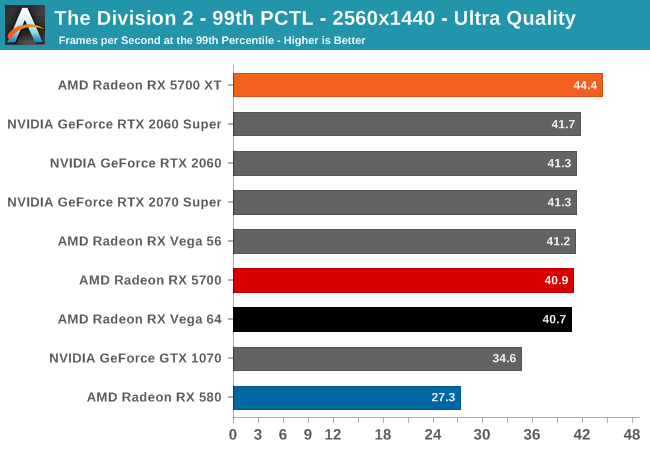
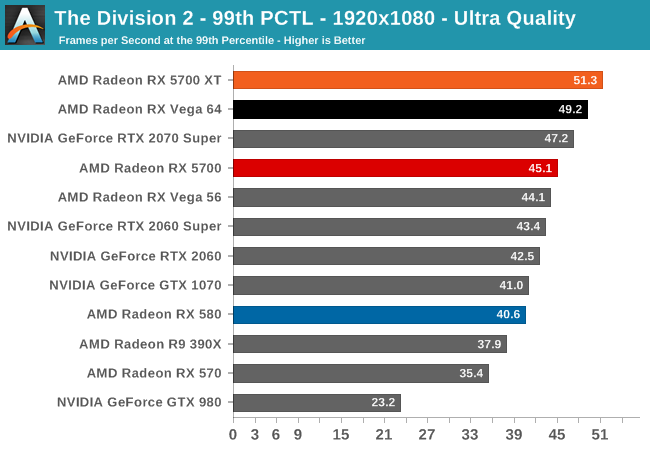
Now a honestly venerable name, GTA V is a veteran of past game suites that is still graphically annoying as they arrive. As an older DX11 title, it provides a glimpse into the graphically in depth games of yesteryear that do not incorporate the modern functions. Originally released for consoles in2019, the PC port got here with a slew of graphical upgrades and options. Just as importantly, GTA V consists of a as an alternative intensive and informative built-in benchmark, rather unusual in open-global video games.
The settings are equal to its previous appearances, which might be custom as GTA V does not have presets. To recap, a "Very High" nice is used, in which all primary snap shots settings grew to become as much as their maximum setting, besides grass, that is at its own very excessive placing. Meanwhile 4x MSAA is enabled for direct views and reflections. This placing also entails turning on a number of the superior rendering functions - the sport's long shadows, excessive decision shadows, and high definition flight streaming - but not growing the view distance any further.
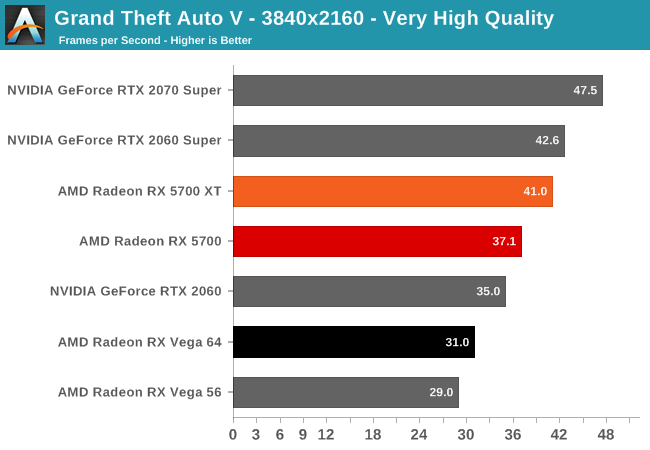
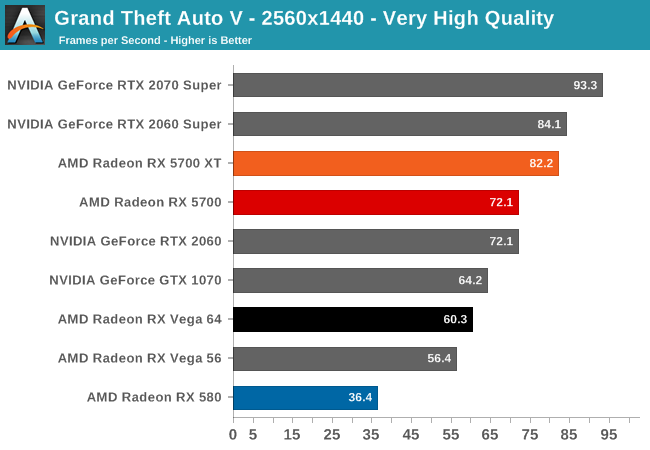
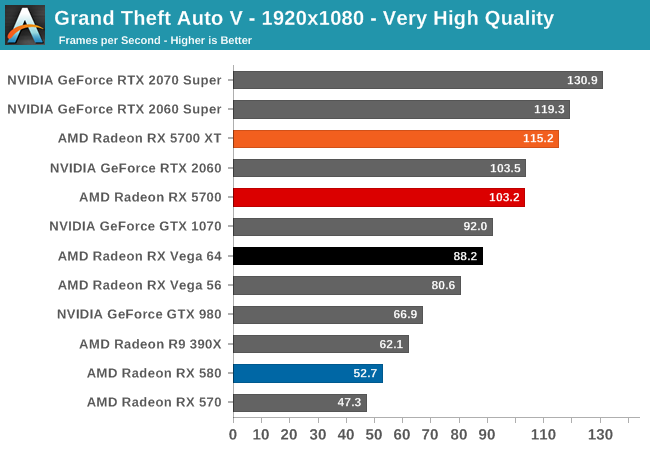

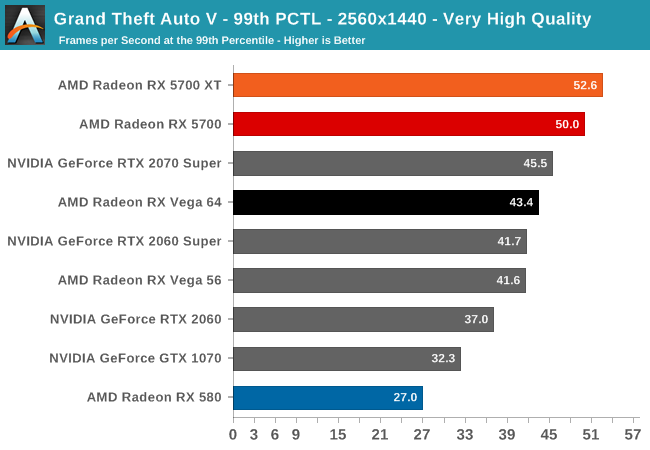
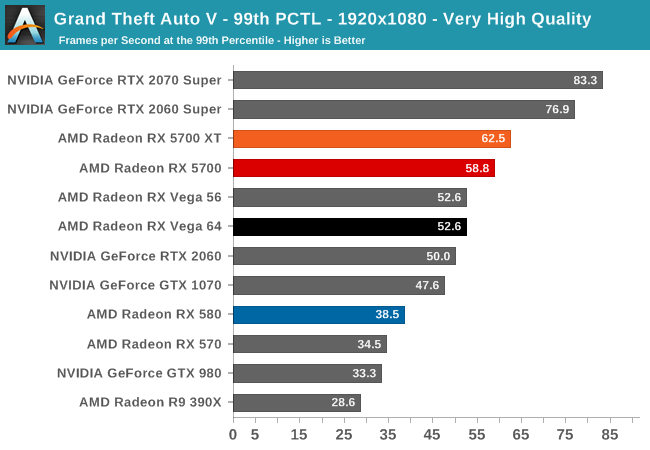
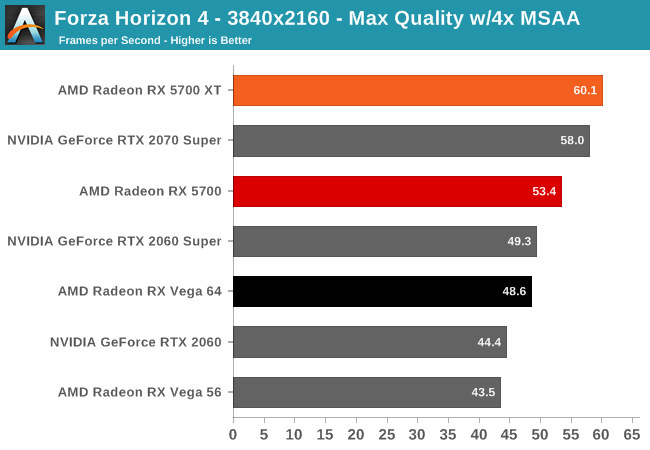
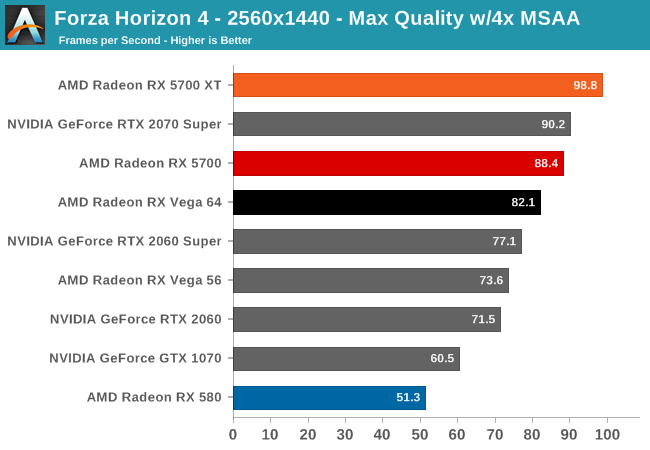

Unfortunately, as I mentioned earlier in my testing observations, the state of AMD's OpenCL motive force stack at launch is quite terrible. Most of our compute benchmarks either didn't have their OpenCL kernels assemble, precipitated a Windows Timeout Detection and Recovery (TDR), or could simply crash. As a end result, simplest three of our ordinary benchmarks had been executable here, with Folding@Home, components of CompuBench, and Blender all getting whammied.
And "executable" is the selection phrase here, because despite the fact that benchmarks like LuxMark would run, the scores the RX 5700 playing cards generated have been nary better than the Radeon RX 580. This a part that they could easily beat on raw FLOPs, let alone performance. So even if it runs, the state of AMD's OpenCL drivers is at a point in which these drivers are likely now not indicative of whatever about Navi or the RDNA structure; simplest that AMD has a whole lot of paintings left to go along with their compiler.
That stated, it also serves to highlight the present day nation of OpenCL typical. In brief, OpenCL does not have any precise champions proper now. Creator Apple is now well entrenched in its very own proprietary Metal surroundings, NVIDIA favors CUDA for apparent motives, and even AMD's GPU compute efforts are greater centered on the Linux-extraordinary ROCm platform, considering the fact that this is what drives their Radeon Instinct sales. As a end result, the overall nation of GPU computing on the Windows desktop is in a precarious region, and at this fee I wouldn't be completely surprised if destiny improvement is targeted around compute shaders alternatively.
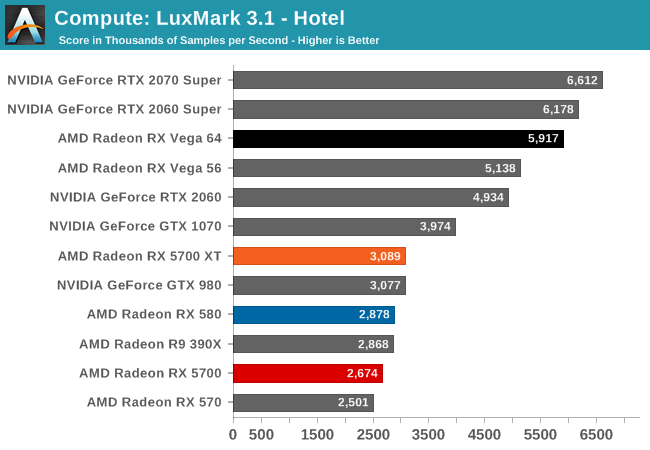
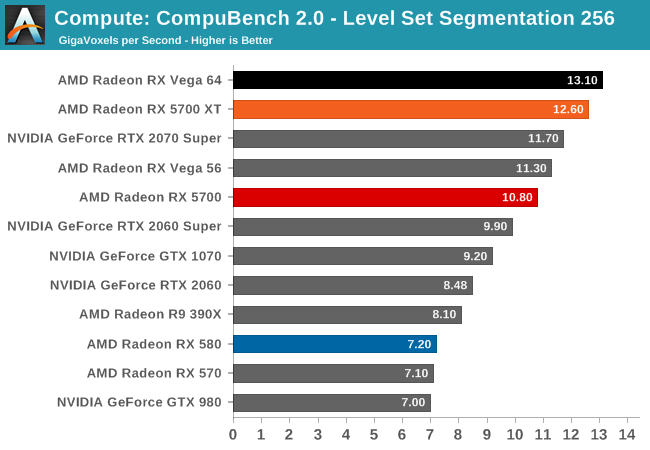
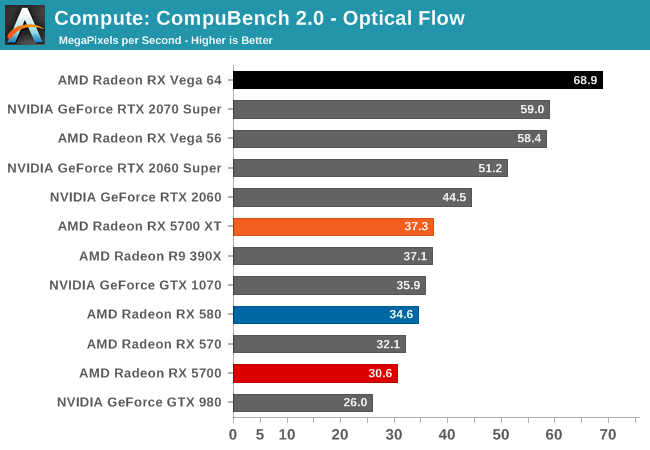
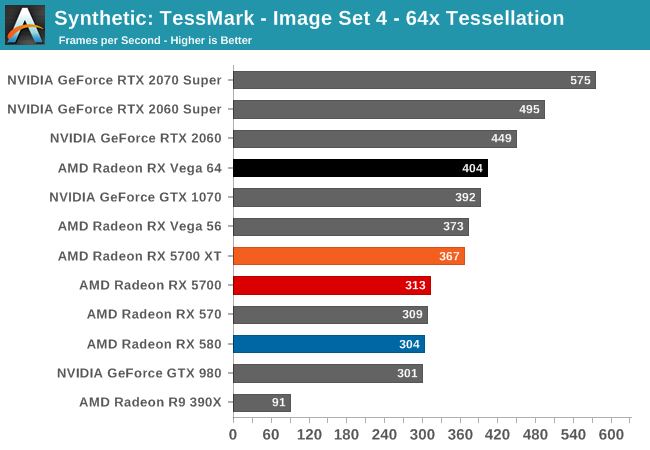
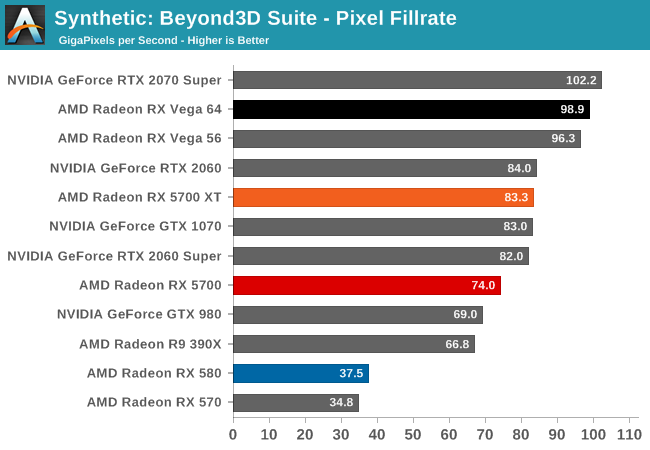

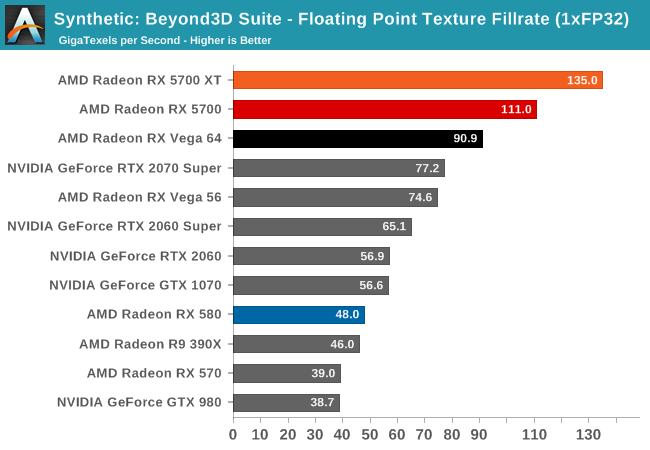
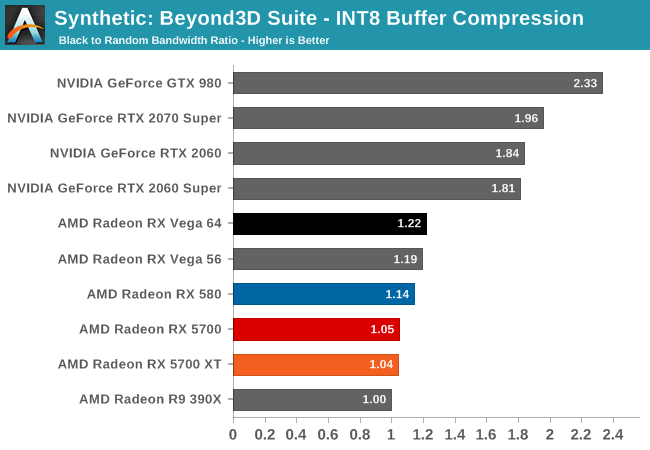
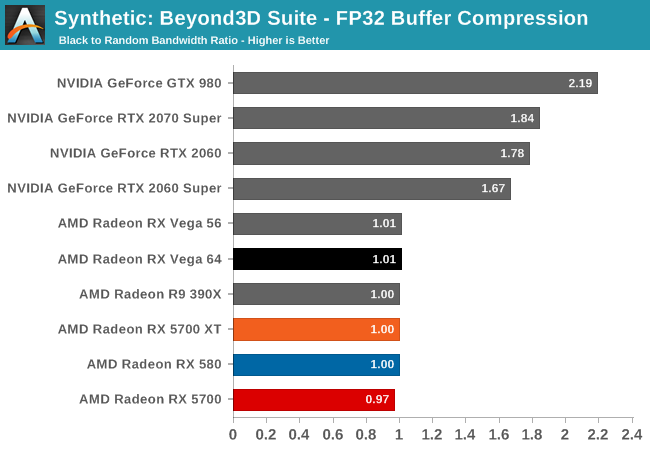
Last, however now not least of path, is our study electricity, temperatures, and noise ranges. While a excessive acting card is right in its very own right, an first rate card can supply super overall performance even as also keeping strength consumption and the ensuing noise ranges in test.
| Radeon Video Card Voltages | |||
| 5700 XT Max | 5700 Max | 5700 XT Idle | 5700 Idle |
| 1.2v | 1.025v | 0.725v | 0.775v |
Looking at boost voltages for AMD's new midrange 7nm playing cards, we do not have too many factors of comparison right now. But still, with AMD's drivers reporting a most boost voltage of one.2v for the 5700 XT, not even the especially juiced Polaris 30-based Radeon RX 590 took quite so much voltage. It may also thoroughly be that TSMC's excessive-performance 7nm method simply calls for a whole lot of voltage right here, but it may additionally be a sign that AMD is riding the voltage/frequency curve pretty tough to get the ones high clockspeeds.
By contrast, the 5700 (vanilla) is a miles greater mundane card. With its lower clockspeeds, the cardboard in no way goes above 1.025v in step with AMD's drivers. Which given the impact of voltage on energy intake, it's sincerely a piece unexpected the spread is so huge.
| Radeon Video Card Average Clockspeeds (Rounded to the Nearest 10MHz) | ||
| Game | 5700 XT | 5700 |
| Max Boost Clock | 2044MHz | 1750MHz |
| Official Game Clock | 1755MHz | 1625MHz |
| Tomb Raider | 1780MHz | 1680MHz |
| F1 2019 | 1800MHz | 1650MHz |
| Assassin's Creed | 1900MHz | 1700MHz |
| Metro Exodus | 1780MHz | 1640MHz |
| Strange Brigade | 1780MHz | 1660MHz |
| Total War: TK | 1830MHz | 1690MHz |
| The Division 2 | 1760MHz | 1630MHz |
| Grand Theft Auto V | 1910MHz | 1690MHz |
| Forza Horizon 4 | 1870MHz | 1700MHz |
Meanwhile clockspeeds also are an exciting story. AMD said that they could now not be keeping again their chips' pinnacle raise clocks, and instead allow the silicon lottery run its course, allowing the satisfactory chips to reach their maximum clockspeeds. The end end result is that our 5700 XT is authorized to clock as much as 2044 MHz, 139MHz higher than AMD's professional Boost Clock metric guarantees. More to the point, that is a substaintial leap in frequency over each AMD's RX Vega and RX 500 collection cards, which might top out around the mid-1500s.
That said, the 5700 XT does not have the TDP or thermal cap to susntain this; I couldn't truely hit 2044MHz even in LuxMark, which as a "mild" compute workload has a tendency to convey out the very best clockspeeds in processors. Instead, the pleasant clockspeed I turned into able to hit become a bit lower, at 2008MHz. So even as the silicon is willing, the physics of powering a Navi 10 at such high clockspeeds are some other count.
At any charge, despite TDP and cooling preserving the 5700 XT greater right down to earth, the card remains able to hit high clockspeeds. More than half of of the video games in our benchmark suite average clockspeeds of 1800MHz or higher, and a few get to 1900MHz. Even The Division 2, which appears to be the unmarried most punishing recreation in this yr's suite in phrases of clockspeeds, holds the road at 1760MHz, right above AMD's professional sport clock.
As for the 5700, with its greater conservative TDP, clockspeed specifications, and probable some binning, the cardboard does not attain quite as high. Its 1750MHz max boost clock is just 25MHz over AMD's assured clock. Meanwhile its clockspeeds are typical a piece more densely packed than the 5700 XT's; all of our games see common clockspeeds among 1630MHz and 1700MHz.
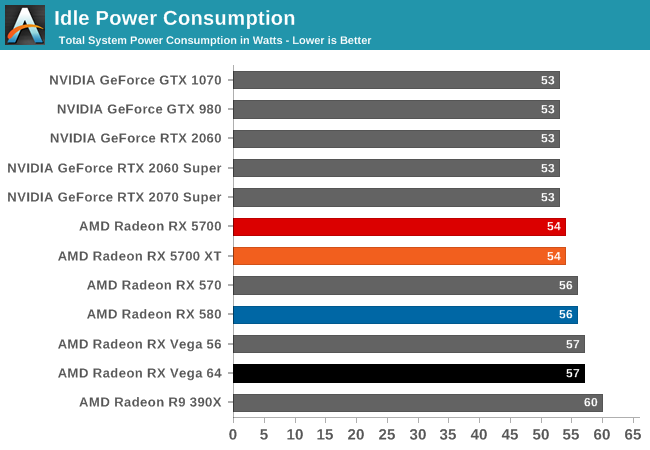
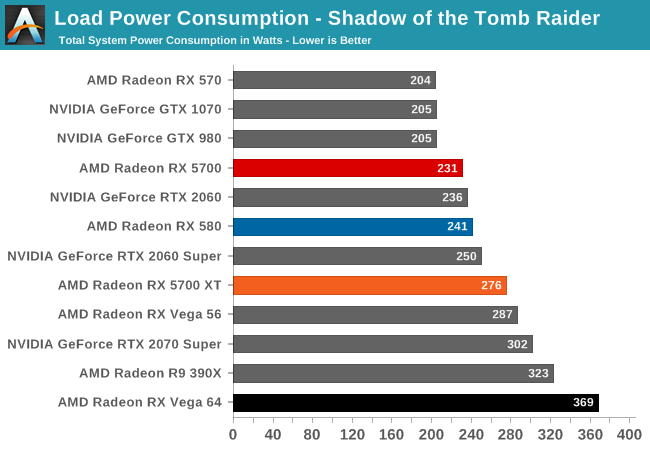
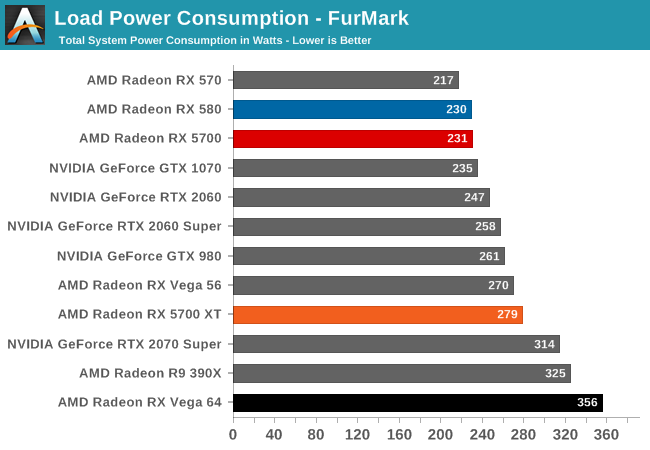


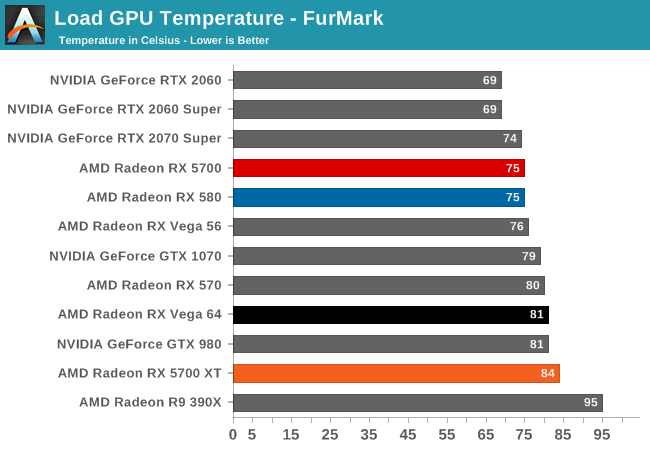
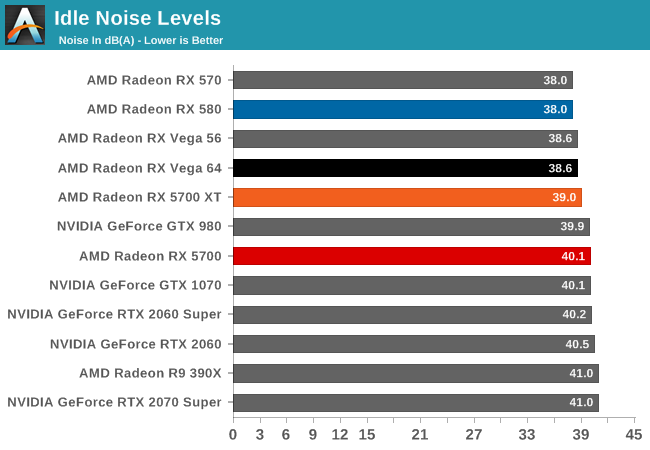
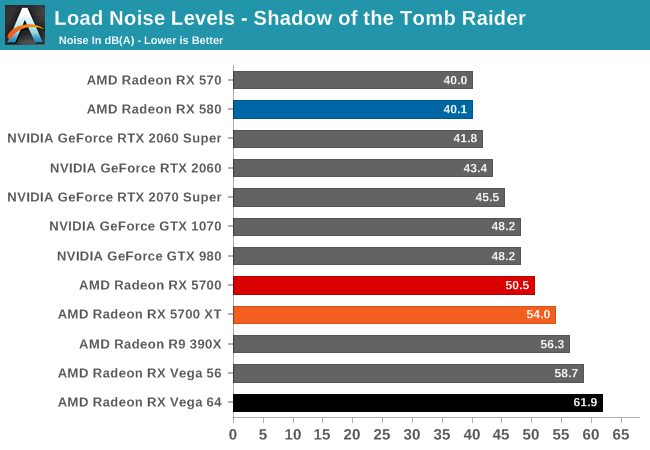
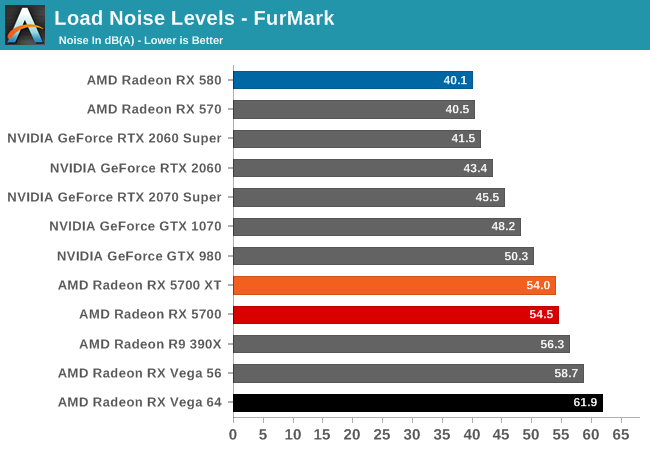
Easily the maximum exciting type of video card launch, the sunrise of a new GPU architecture is a rare occasion that’s not to be missed. New architectures give carriers a danger to show the gambling field on its metaphorical head, defying some expectancies, setting new ones, and redefining what is feasible with a video card. Especially within the case of nowadays’s launch of the Radeon RX 5700 series cards, and their RDNA architecture Navi GPUs, there’s loads to unpack. But one way or another, that is without problems going to be the most important and eventful video card launch of 2019. So permit’s dig in.
For those of you who are studying this rare Sunday launch article with a cup of espresso (or are an AnandTech editor who’s been drinking it all night time long), perhaps it’s nice to cut to the chase and then construct out from there. RDNA is an exceptionally crucial structure for AMD, and it sets the level for lots of things to return. At the equal time, but, it’s additionally the primary component in a longer-term plan for AMD, with AMD continuing to further iterate on their design over the approaching years.
So how does AMD’s first example of RDNA stack up? For AMD and for customers it’s plenty wanted development. To be sure, the Radeon RX 5700 series playing cards aren't going to be Turing killers. But they may be aggressive in charge, performance, and strength consumption – the all-vital trifecta that AMD has trailed NVIDIA at for too many years now.
By the numbers then, the Radeon RX 5700 XT holds an 11% overall performance advantage over its nearest opposition, NVIDIA’s new GeForce RTX 2060 Super. Similarly, the RX 5700 (vanilla) takes a 12% advantage over the RTX 2060 (vanilla). So NVIDIA become proper to shift their product stack remaining week in guidance for today’s AMD release, as AMD is now delivering the overall performance of what turned into closing week a $500 video card for as little as $350. That’s a chief development in overall performance-in line with-dollar, to say the least.
| Performance Summary | |||
| Price | Relative Performance | Relative Perf-Per-Dollar | |
| RX 5700 XT vs RTX 2060 Super | $399 | +11p.C | +11p.C |
| RX 5700 vs. RTX 2060 | $349 | +12percent | +12percent |
| RX 5700 XT vs RTX 2070 Super | $399/$499 | -5% | +19percent |
And, fortuitously, none of this breaks the financial institution on energy intake both. The RX 5700 fares slightly higher than its opponent, while the noticeably-clocked RX 5700 XT is more energy-hungry in securing its performance benefit over the RTX 2060 Super. Which, with the RX 5700 inside spitting distance of the RTX 2070 Super in phrases of gaming performance, it offers you a very good concept of what the power cost turned into for that ultimate 11%. For the moment then, at the same time as AMD hasn’t significantly shifted the strength/performance curve as opposed to Turing, in addition they have averted the equal form of painful overall performance chase that added toasty playing cards just like the RX Vega 64 and RX 590.
If there's a actual downside here, it’s that AMD’s blower-primarily based coolers aren’t going to electrify each person with their overall performance, even by blower standards. The RX 5700 XT is a bit louder than even NVIDIA’s GTX 1080 Ti, that is a flat-out higher TDP card. To make certain, it’s properly in advance of the RX Vega collection right here (or maybe the reference 390X I dug out), but AMD has yet to absolutely grasp the dark artwork of quiet blowers.
Tangentially, the largest danger for AMD right here is that they’ve finished a whole lot of this efficiency gain with the aid of leaping beforehand of NVIDIA through a era on the producing facet, tapping TSMC’s 7nm technique. NVIDIA will get their own chance to faucet into the benefits of the brand new node as well, which all other elements held identical, is possibly to tilt matters in NVIDIA’s benefit another time. The fortunate factor for AMD, at the least, is that NVIDIA doesn’t appear to be in a hurry to get there, and we’re not looking forward to 7nm NVIDIA client parts this yr.
The exquisite question for game enthusiasts then is whether AMD’s performance and price benefit is enough to offset their characteristic deficit. With AMD’s efforts completely invested into the backend in their RDNA structure in preference to adding consumer-facing capabilities, the RX 5700 collection doesn’t bring any marquee hardware features to the table, and it doesn’t do some thing to seize as much as NVIDIA’s RTX playing cards. The quit result is that the Radeon playing cards are faster for the charge, however NVIDIA brings things like ray tracing and variable charge shading that AMD cannot.
Truthfully, there is no correct solution right here – at the least not one in order to be universally agreed upon. Variable fee shading is merely a (cool) overall performance optimization, however hardware accelerated ray tracing is some thing more. And NVIDIA has been running very, very hard to get builders to adopt it. The modern crop of video games arguably isn’t using it to earth-shattering impact (although Metro is coming near), but the slate for 2020 includes numerous excessive-profile video games. So it comes right down to a question of whether or not to take the better overall performance now and chance the concern of lacking out later, or taking ray tracing now for an unproven destiny?
Ultimately, I don’t think there’s a horrific purchase right here among the RX 5700 XT and the RTX 2060 Super it competes with; both are stable playing cards with a few particular execs and cons, and both one must make maximum game enthusiasts glad. As for the vanilla showdown among the RX 5700 and RTX 2060, AMD’s hand is plenty stronger right here (or as a substitute, NVIDIA’s is weaker), which makes for an easy selection. The RX 5700 is quicker, barely much less power hungry, and it capabilities a full 8GB of VRAM. The RTX 2060 become continually a risky purchase with its mere 6GB of VRAM, and now with the RX 5700 there’s certainly no motive desirable sufficient to recall it, inspite of ray tracing.
As for game enthusiasts seeking out an improve, things are a bit greater combined. The front of the RX 5700 collection has pushed midrange video card costs down, but now not by using excellent amounts. On a natural overall performance foundation, AMD’s new playing cards could be very stable enhancements over the RX 500 collection in phrases of overall performance and with comparable energy utilization, however then they also fee almost twice as a lot because the RX 500 series did at launch. The RX 5700 series is possibly excellent defined as a replacement for the RX Vega series and a successor to the RX 500 collection; however it isn't always a successor to RX Vega, nor is it a right replacement for RX 500. Instead, the brand new cards are a extra significant upgrade for any GTX 970 or R9 390(X) holders who are seeking out their subsequent midrange card. In which case the RX 5700 collection supplies greater performance in leaps and boundaries.
In the meantime, it’s a welcome sight to look a more aggressive AMD in the video card market. With AMD no longer-so-concentrically launching a brand new range of first rate CPUs today, a new cycle of device builds is kicking off, which the RX 5700 series is nicely-placed to capture a bit of. Ultimately then, at the same time as the Radeon RX 5700 collection isn't always AMD’s Ryzen 3000 second for video cards, it’s a return to shape for the enterprise and it’s top notch to look opposition renewed within the video card space. Now to peer wherein the rest of AMD’s adventure with Navi takes them over the approaching months.
Let's block commercials! (Why?)
//www.anandtech.com/display/14618/the-amd-radeon-rx-5700-xt-rx-5700-review
2019-07-07 16:34:17Z
52780327749348


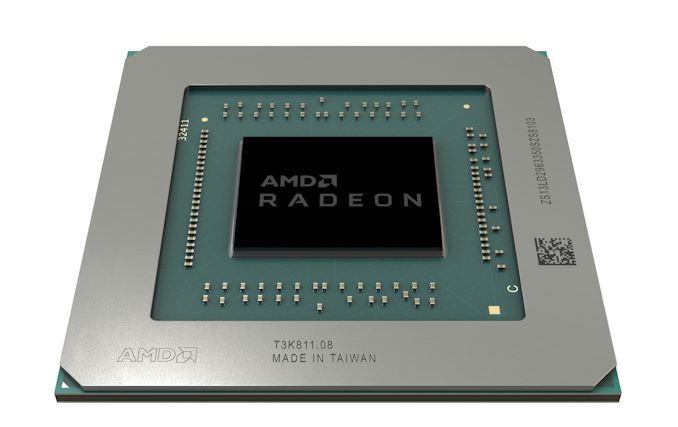

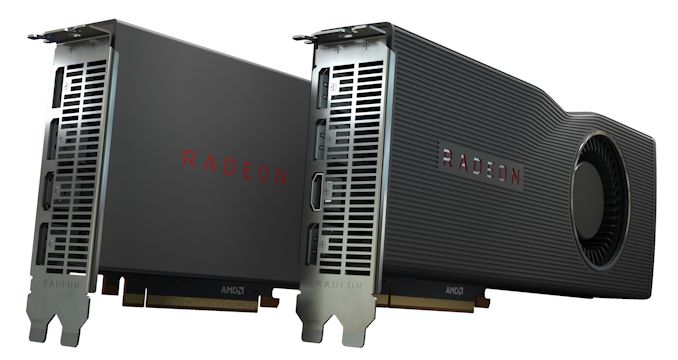
0 Response to "The AMD Radeon RX 5700 XT & RX 5700 Review Navi Renews Competition in the Midrange Market AnandTech"
Post a Comment